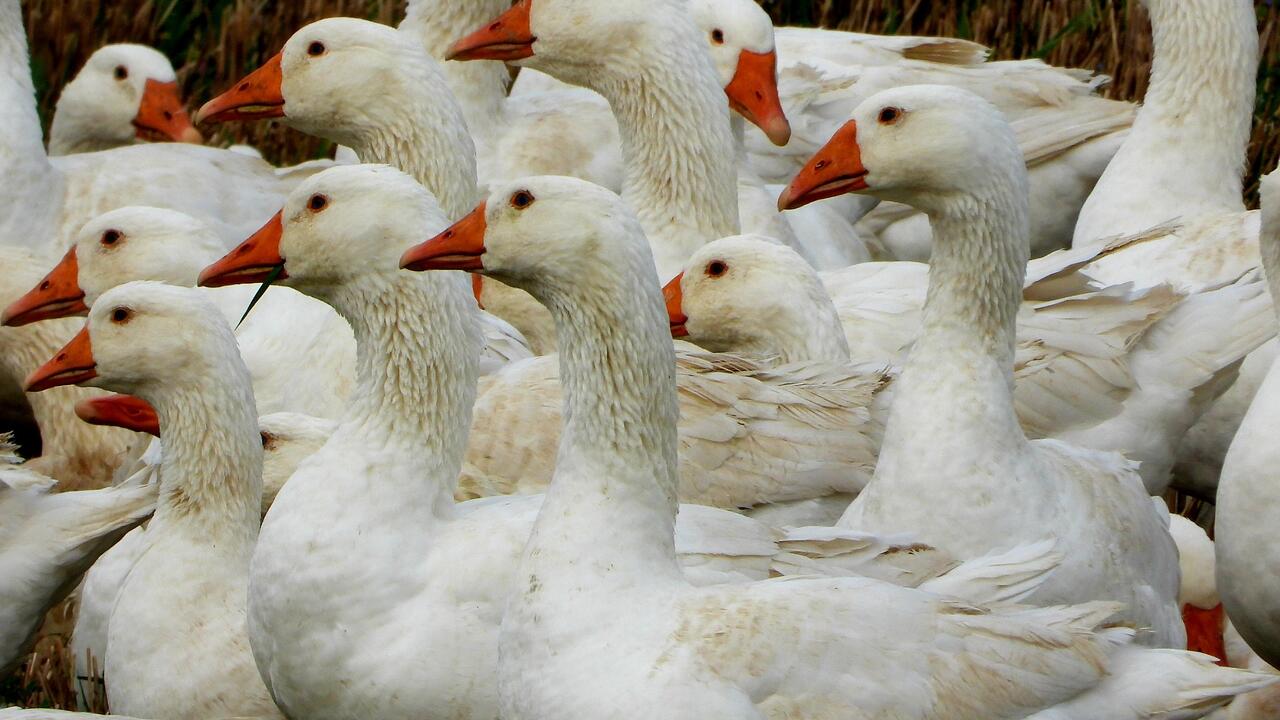
Q and A with the experts: Bird flu spillover to mammals a cause for concern
Increasing likelihood caused by human encroachment on wildlife habitat

Increasing likelihood caused by human encroachment on wildlife habitat
By Media RelationsThe World Health Organization recently stated that the spillover to mammals of H5N1 influenza—commonly known as bird flu—should be monitored closely, and we need to be prepared to face infection in humans. Dr. Christine Dupont, a biologist at the University of Waterloo, is an expert on infectious disease in animals. This interview has been condensed.
This outbreak of bird flu is affecting domesticated and wild bird populations worldwide. How would you characterize it?
This strain doesn’t seem like a regular bird influenza. It’s referred to as highly pathogenic avian influenza. Bird influenza is common, and these viruses evolve quickly. The big picture is that many influenza viruses, like this H5N1 bird flu, come from aquatic birds. It’s monitored intensely because they are potential pandemic viruses.
What is the concern about a jump to humans?
Spillover events are a worry, especially when you’ve got a virus like this that’s highly contagious among birds and causing infection in a lot of different organ tissues. And if it has been moving into other animal species, that means it could also not just jump the tissue barrier, but the species barrier. We know in the past that every pandemic we’ve had with influenza, like the swine flu and the Spanish flu, had their origins from spillover events that can all trace back to aquatic birds.
What should people do if they come into contact with sick or dead birds?
As migratory birds are moving and breeding, there’s probably going to be another peak of bird flu, and there may be sick or dead birds in the area. People shouldn’t be touching those, but we shouldn’t be leaving them there either because that increases the chances that a mammal or another bird might eat them. There’s a phone number people can call for someone to pick up the carcasses or deal with the sick birds. They are available on the website of the Canadian Wildlife Health Cooperative.
This series is produced for the media, and its purpose is to share the expertise of UWaterloo researchers. If you’d like to contact this researcher, please reach out to media relations.

Read more
Here are the people and events behind some of this year’s most compelling Waterloo stories

Read more
The InnoHK Centre for Eye and Vision Research aims to bring eye and vision research to market through Waterloo-Hong Kong partnership

Read more
15 University of Waterloo researchers have been named to the annual Highly Cited Researchers™ list for significant contributions to their specific fields of research
The University of Waterloo acknowledges that much of our work takes place on the traditional territory of the Neutral, Anishinaabeg, and Haudenosaunee peoples. Our main campus is situated on the Haldimand Tract, the land granted to the Six Nations that includes six miles on each side of the Grand River. Our active work toward reconciliation takes place across our campuses through research, learning, teaching, and community building, and is co-ordinated within the Office of Indigenous Relations.